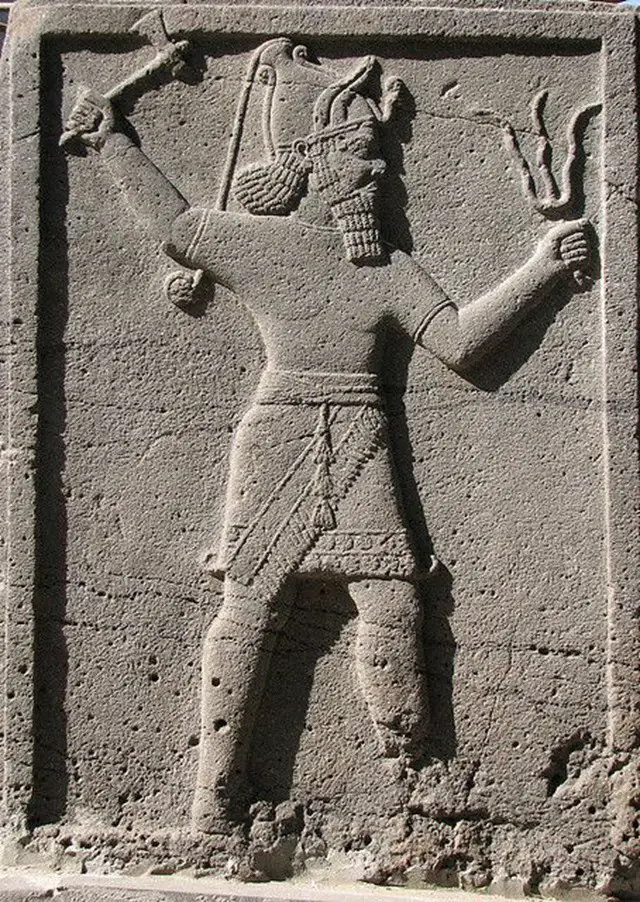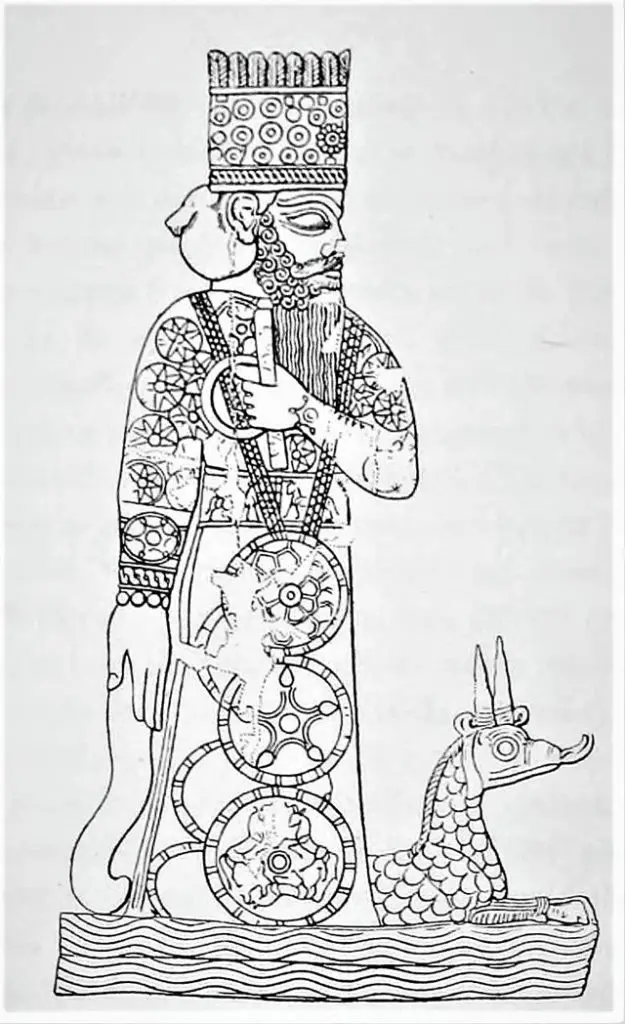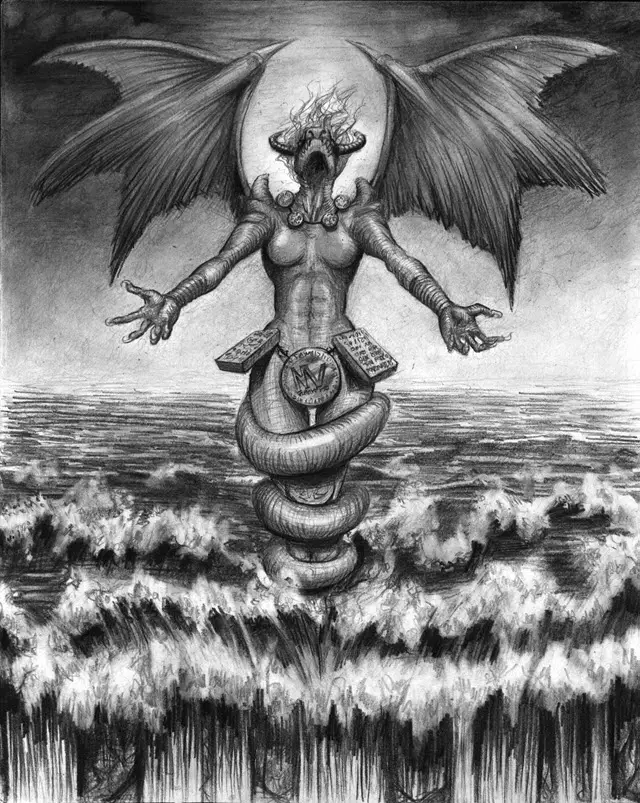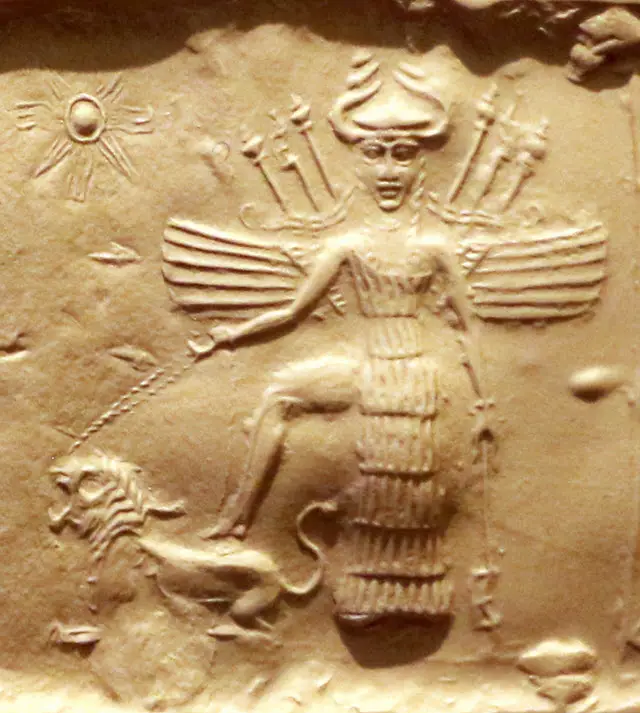Babylon was one of the major cities of Ancient Mesopotamia. It had numerous inventions and developments which had an impact on the people of the whole Mesopotamia Civilization.
One of the most significant areas was the development of religion and honouring deities. Like every city of Ancient Civilization, the city of Babylon also had major gods who were respected, honoured, and worshipped.
Babylon had some major primary deities which include Adad, Marduk, Apsu, and Tiamat. These deities, however, were the primary deities of the Babylonians, their cult later flourished to other cities as well.
Every deity was associated with power and responsibility. There were temples built to honour these deities. And, most of them were mentioned in myths and tales.
Here is the list of 9 significant deities of the city of Babylon with their details.
9. Adad
Content
God of storms

Source: Wikimedia Common
Adad, the god of storms, was the primary god of Babylonians. He was the darker version of Ninurta, the Sumerian god and was known as Ishkur by the Sumerians.
People of the city of Babylon worshipped him as a giver and a taker as a result given by Adad would depend on the acts of the people.
If any of the followers respected, obeyed and followed his rules, they would be given a pleasant climate and appropriate amount of rainfall resulting in high crop productivity.
But, if anyone went against the rules, he would make it rain until the flood, darkness, hurricane, and even deaths occurred in the area he was honoured.
The god of the storm was identified by his depiction, which portrayed a figure carrying a lighting fork symbolizing his power over nature.
Like every deity, Adad also had different names depending on the cities he was worshipped. For instance, he was called Ishkur in Sumer, Rammanu in Akkad, and Addu, Hada or Rimmon in other cities.
8. Marduk
God of thunderstorms

Marduk, the god of thunderstorms was the patron god or the chief god of the city of Babylon. He was the son of God Enki and Goddess Damgalnuna and was married to fertility goddess Sarpanitu.
Besides being the god of thunderstorm, Marduk was also associated with one of the seven constellations, Jupiter and also with compassion, healing, magic, fairness, and regeneration.
Apart from this, he held more than 50 different titles which include a supreme deity, chief god, king of the gods, and patron god. He was also referenced as an agricultural and storm god by many of the Babylonians.
Although the god of the thunderstorm originated from local farmer’s god, Asarluhi, he became one of the primary deities for the Babylonians.
People of Babylon started worshipping him as their patron god, and the power and significance became wider. With the upgrading power and responsibility from a local agricultural deity, Marduk was considered as the creator of the earth and heaven.
And, he was mentioned in numerous myths and tales which include a famous myth known as Enuma Elish. It tells the story of the rise of the power of Marduk.
God Marduk is depicted as a human with royal robes and carrying a snake-dragon along with a spade, where spade symbolized the essence of farming.
7. Nergal
God of war, death, and destruction

Nergal, also known as Erra or Irra, was the God of death, war, destruction, and agriculture. He was the son of the fertility goddess, Ninlilc and God of air, Enlil.
The power and associations of Nergal were similar to another god of the city of Babylon, namely Erra. These two gods were worshipped separately during the initial phase, however, they are honoured as one God nowadays.
Babylonians worshipped Nergal as one of their major gods, primarily associated with agriculture but later also with war, death, and destruction.
Nergal represented high summer sun around c.2900 BCE where the rays of the sun and the excessive heat from the sun-scorched the earth leading it to the destruction of the crop production.
Due to the destruction of every production due to the massive power of sun rays and heat, the god of agriculture was associated with destruction and death.
Nergal is depicted as a man in motion who is wearing a long robe while crushing human figures by foot. He is also carrying a maze and a scimitar which has a double lion’s head.
6. Tiamat
Mother to the gods

Goddess Tiamat was the primordial goddess of the salt sea and the mother to the gods of the city of Babylon.
She is believed to have given birth to the first generations of gods by mating with Apsu, the freshwater god. People of Babylon referred to her as the mother goddess based on this fact.
Goddess Tiamat is parted into two prominent Chaoskampf Tiamat and Tiamat mythos. The first one refers to her as the monstrous associations, which also symbolizes as the primordial chaos.
The other part, Tiamat mythos shows the image of a holy goddess and also the union of marriage between freshwater, God Apsu and saltwater, goddess Tiamat.
Like every deity, mother goddess Tiamat is also mentioned in various myths and tales of ancient Mesopotamia. One of the most famous myths talks about Tiamat fighting against her son, Ea to take revenge for the death of Abzu.
Ea had killed Abzu to take over the throne which made Tiamat take the form of a dragon and fight against her son.
However, Tiamat was defeated and killed by God Marduk, but she left behind the monster dragons filled with venom.
5. Ea
God of wisdom

Ea, the god of wisdom, was also known as Enki and Nudimmud depending on the cities he was worshipped. He was the son of Apsu and Tiamat.
The god of wisdom was known as Enki by the Sumerians, and as Ea and Nudimmud by the Babylonians and Akkadians.
Ea, like his father An, governed the atmosphere, heaven, and Earth. Apart from the responsibility of overseeing these, he was also associated with other responsibilities and powers.
Some of the major ones included intelligence, crafts, trickery, magic, healing, mischief, art, fertility, and exorcism. However, his significant associations were wisdom and freshwater.
Like every other deity in ancient Mesopotamia, Ea is also mentioned in myths and tales. Some of the most significant ones include Enuma Elish, Enki & the World Order, and the Atrahasis.
The god of wisdom can be identified from his depiction, which shows him as a bearded man wearing a horned cap and a long robe. The streams are also shown flowing from his shoulders which symbolizes two significant rivers of Mesopotamia, Euphrates and Tigris.
4. Shamash
God of the divine justice and the sun

Shamash, the god of divine justice and sun, was the son of Ningal and Nanna. He was also known by the names Samas, Utu and Babbar depending on the cities he was worshipped.
The god of the sun brought light and warmth to the land, which allowed plants and crops to grow. He would emerge from the underground chamber at the sunrise and take a path all across the sky, filling the sky with light.
Besides this, he also would oversee everything ongoing in and around the Earth during the daytime. And, take necessary actions required to maintain truth, justice, and proper judgements.
Apart from divine justice and sun, Shamash was also associated with generosity, humanity, and kindness. His power provided humankind with a law to King Hammurabi.
People of the city of Babylon honour and worship him and have built various temples in Eridu, Sippar, and Larsa. The temples glorified to God Shamash are known as E-Babbar.
God Shamash can be identified from his depiction, which shows him as an older man with a long beard. Also, rays of lights passing from his shoulders which look like wings.
The rays of lights symbolize that he was able to see everything that was going on on the Earth. And, acted accordingly to maintain proper justice, truth, humanity, and judgements.
3. Apsu
God of freshwater

Apsu, also known as Abzu or Absu, is the Babylonian god of freshwater. He was the father of the gods.
The god of freshwater existed before any other god. He was the first god or the begetter who later gave existence to all other gods. Apsu merged with his consort, Tiamat and gave birth to all other gods.
People of Babylon worship and honour him as the governor and the creator of all gods. Various temples have been built to keep him.
Apart from this, Apsu is also mentioned in many myths and tales. One of the most significant myths is the Enuma Elish which tells the story of Absu, Tiamat, and Ea.
Despite his ability, responsibility, and power he was killed by his son, Ea. Ea murdered his father to take over the throne, which led to the war against Tiamat.
2. Nabu
God of writing and wisdom

Nabu, the god of wisdom and writing, was the grandson of Ea and son of Marduk. His name meant the announcer.
Nabu was primarily worshipped in Babylon and late in Borsippa, the archaeological site in Babylon.
People of Babylon worshipped and honoured God Nabu as one of the major gods and held a massive festival since the first millennium. The festival was named Akitu.
Numerous other deities were also honoured during this festival however Nabu had a vital role. The main event of this festival included the movement of the statue of Nabu from Borsippa to Babylon.
Apart from the festival, people also honoured him as the patron of scribes. Also, his name references the prophetic abilities with the gift of writing.
The god is identified from his depiction which shows him holding a stylus, either standing near or riding a Mushhushshu dragon.
1. Ishtar
Goddess of love and procreation

Ishtar, the goddess of love and procreation, was the prominent goddess from 35oo BC until the 5th Century BC.
She is the Babylonian version of the Sumerian goddess Inanna. However, she is more sexualized than Sumerian Inanna.
Though goddess Ishtar was the goddess of love and procreation, she was also associated with warm political power and justice. She was also known as the Queen of heaven.
Like every deity of ancient Mesopotamia, Ishtar was also mentioned in many myths. One of the renowned is the Epic of Gilgamesh in which Ishtar is known to have seduced King Gilgamesh.
But is repulsed by the King by listing many faults of her. A few of her flaws include short temper and a spoiled femme fatale.
However, she was the fighter for justice who sometimes overpowered rights from goddesses including mes from Enki and Enanna temple from An.
Conclusion:
Every deity was entitled with certain power and responsibility. Also, some deities were listed under minor deity and some under major deity.
However, every Babylonian honoured and worshipped the deity with equal respect and had belief in everyone.
Though some deities originated in the city of Babylon, they were worshipped by other cities including Sumer, Akkad, and Assur.
